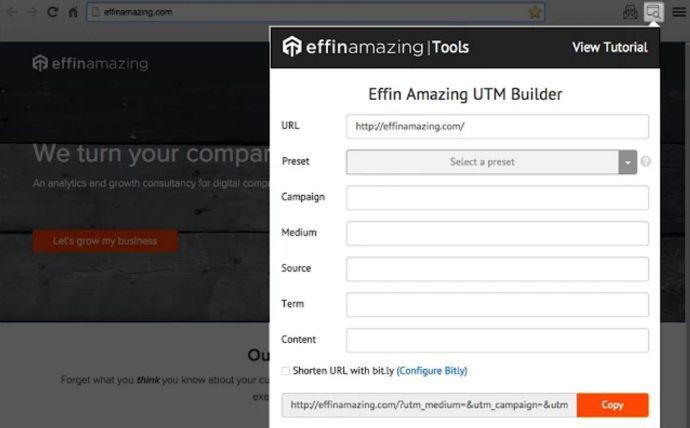

The easiest way to create effective UTM codes is to use Google’s URL builder. Google Analytics keeps track of these events, enabling you to know which UTM tracking codes were clicked the most and how many of those clicks ended up converting. This is very useful in keeping track of visits from directory links, individual ads, links placed in emails, various social media accounts, or virtually any other URLs that link back to your site. When a visitor clicks on a URL containing the UTM string, it generates an event which your Google Analytics account records. UTM strings are add-ons or tags that you place at the end of URLs that you want to track. With this information, you can discontinue ads that aren’t worth the expense and focus on those that bring in clicks and conversions. UTM codes also assist in identifying which impressions get the highest or lowest clicks as well as the clicks that get the highest or lowest conversions. If used properly, UTM tracking code can double or triple your clicks and conversion rates – without spending a dollar. UTM codes help to identify the specific links or ads where your clicks and conversions are coming from, and not just the website. Data gotten from traditional analytics doesn’t provide this level of in-depth information, and this is where UTM codes come in. It could be a new tweet, the image or banner link on your page or an email sent to your subscriber list. You may know that your website gets a lot of visitors from your Twitter page, but you may want to know the specific action that drives the traffic. UTM codes allow marketers to gain additional information within their Google Analytics account – information which can be used to optimize digital marketing strategies.
#UTM CODE BUILDER DRIVER#
The primary driver behind the success of SEO and digital marketing campaigns is data, and UTM codes provide just that – it enables marketers to make sound business decisions by providing necessary information. The quantitative data provided by UTM tracking helps business owners and marketers to determine where to focus their attention in order to get the best ROI. The UTM (Urchin Tracking Module) code is one of the easiest methods of tracking where your site visitors are coming from.

Fortunately, there is a tool that can do this – Google’s UTM tracking codes. Although Google Analytics helps you to track which websites your clicks/conversions are coming from, it doesn’t show you the specific links or ads that get clicked on. If you’re responsible for creating and running digital marketing campaigns, you should know where most of your traffic is coming from. A step-by-step guide for creating and using UTM tracking codes in Google Analytics to understand your website traffic


 0 kommentar(er)
0 kommentar(er)
